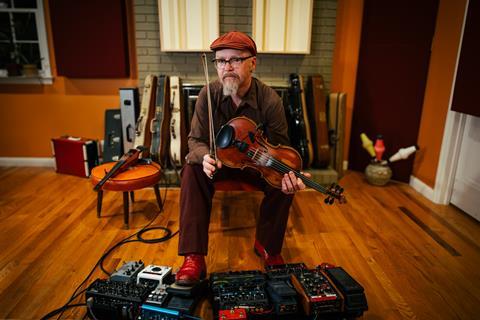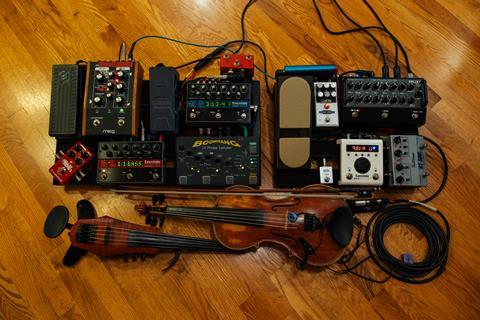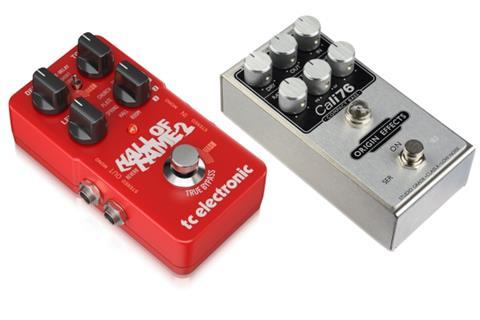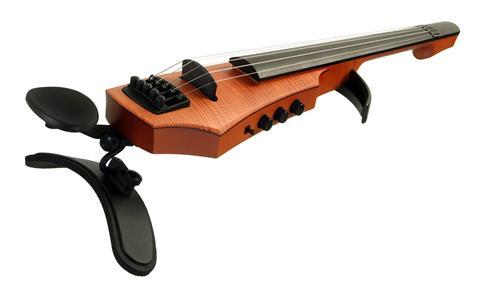In our Accessories 2024 supplement, US five-string fiddler shares his go-to tech accessories

Discover more Featured Stories like this in The Strad Playing Hub
Everything starts with my violin. It’s a five-string made by John Silakowski in 2000 that I’ve been playing for nearly 25 years. I use a DPA 4099 clip microphone (dpamicrophones.com) and a Schertler DYN-V-P48 pickup (schertler.com). The pickup first goes through the Schertler Yellow Single preamp, before uniting with the mic signal in the Grace Design FELiX2 blender (gracedesign.com). This is a two-channel mixer that allows me to blend the pickup and microphone together, adjust EQ, and choose the levels for each, which I vary depending on different situations. For example, when I’m looping, the mic can pick up background sounds that muddy the effect, so if I’m outside when it’s windy or in a noisy club, I’ll go lighter on the microphone and heavier on the pickup. The mic gives me the flexibility to use my voice to add to the loop, whether that’s breath or vocal sounds or singing a harmony part.
The Grace FELiX2 also allows me to adjust the phase of the mic and pickup. Even though they are right next to each other on the violin, the signals don’t reach the blender at exactly the same time, so you can get what I describe as a somewhat hollow sound. The phase adjustment lets you dial in the waveforms to bring them into phase and the sound then comes into focus.

Next, the signal goes into the Origin Effects Cali76 Compact Deluxe compressor (origineffects.com), which evens things out a little bit – it brings dynamics under control, especially when I’m creating bass effects or percussive sounds from the body of my violin using the pickup, which is more stable for these textures; from there it enters a Fulltone GT-500 (fulltoneusa.com) for a range of mild drive to heavy distortion; and then the signal goes to the Eventide H9 multi-effects pedal (eventideaudio.com) with an MXR Tap tempo switch (jimdunlop.com). Finally, I have a Lehle Mono Volume pedal (lehle.com) that allows me to adjust the level of the parts I’m creating, and also to tune between songs.
And that’s what I call my tone board. I use two different pedal boards – this smaller one and a larger one that is essentially my effects board. The smaller board is where the sound of my instrument, as it exists, really happens. If I’m playing an Americana gig or something that doesn’t require a big array of effects, then I just take the small board with me and I can still plug in and have an effect or two. I use a stereo set up because when I’m looping it allows me to have a wider spread of sound and distinction between parts. With mono, everything can become crowded in the centre.

On my bigger main effects board, I have a lot of different pedals. There’s the analogue Moog MF-108M Cluster Flux (moogmusic.com); there are a lot of interesting modulation-type sounds I can make with it, even adjusting parameters with my foot via an expression pedal. All my pitch-related effects come from the Eventide PitchFactor; it also has an expression pedal for real-time changes. With it I can create effects such as bass sounds, parallel octaves or harmonies: for example I can set it to play in perfect 4ths, or in diatonic four-part harmonies in a particular key, or even something more dissonant like a half step up and 4th down. I really like this pedal; it’s a predecessor to the Eventide H9 pedal on my smaller board. The H9 is an updated version that combines all Eventide’s Factor pedal effects in one unit, but it requires an iPad or some other Bluetooth interface to operate so it’s not as quick to control and harder to manipulate in a live setting.
‘I’ve spent a lot of time practising with the pedals so that they really feel like an extension of my instrument’
My reverb pedal is the TC Electronic Hall of Fame 2 (tcelectronic.com). I’m careful with the amount of reverb I use but it’s a very useful effect. For me, it’s about being able to create tones that contrast with each other when I’m layering, and also to create different atmospheres based on the type of piece that I might be playing. Then I create all the echoes and delays with an Eventide TimeFactor plus a tap tempo. The brain of it all is my looper, the Boomerang III Phrase Sampler (boomeranglooper.com), with three independent tracks, lots of arrangement options, and even the ability to fade out. The sound then routes back through the GraceFELiX2 on my smaller board, where I can send it out to a mixing board, amps and headphones.

I don’t change my pedals very often – when I get used to something, I like to stick with it for a while. I’ve spent a lot of time practising with the pedals so that they really feel like an extension of my instrument; I know what creative tools they can give me, and when I’m in a live situation I can use them quickly and get the types of sounds that I’m looking for.
However, I have recently acquired a Hologram Electronics Microcosm pedal (hologramelectronics.com) which I’m experimenting with. It makes some very cool granular sounds and textures, and it has a looper too. My issue is finding space for it – I could get a bigger board, of course, but I have to the draw the line somewhere especially when I’m travelling and taking flights.

The first piece of kit I’d advise for someone just starting out would be a delay pedal. Most delay pedals can create a loop as well, because a loop is essentially like a delay or an echo of the sound that you’ve just made. It’s fun to use because it’s immediate – you get back what you have just played – and it can be a musical tool as well; for example you can create a rhythmic bed just using a delay.
I’ve just launched my Blue Ridge Fiddle Camp in North Carolina (blueridgefiddlecamp.com) which takes place for the first time this August, where players can try out looping and effects in our technology lab and experiment with pedal boards. Participants can also explore different eclectic styles and study rhythm.
Last but not least is my NS Design CR5 five-string electric violin (thinkns.com). I like the weight and balance of it very much, and the fact that it has an upper bout stop as a point of reference. It’s better than my acoustic for certain situations such as using the octave pedal to make bass sounds, or when playing in a band where the stage volume is heavier, or creating distortion and overdrive, and I love the pizzicato switch. I like to think of my acoustic fiddle as dressed up for the opera and my electric as dressed up for the club!
INTERVIEW BY EMMA BAKER
Subscribers to The Strad receive the 2024 Degrees supplement free with their copy of the June 2024 issue
Read: Casey Driessen: Music in other lands
Read: How to play a chop groove with Casey Driessen
Discover more Featured Stories like this in The Strad Playing Hub
The number one source for playing and teaching books, guides, CDs, calendars and back issues of the magazine.
In The Best of Technique you’ll discover the top playing tips of the world’s leading string players and teachers. It’s packed full of exercises for students, plus examples from the standard repertoire to show you how to integrate the technique into your playing.
The Strad’s Masterclass series brings together the finest string players with some of the greatest string works ever written. Always one of our most popular sections, Masterclass has been an invaluable aid to aspiring soloists, chamber musicians and string teachers since the 1990s.
American collector David L. Fulton amassed one of the 20th century’s finest collections of stringed instruments. This year’s calendar pays tribute to some of these priceless treasures, including Yehudi Menuhin’s celebrated ‘Lord Wilton’ Guarneri, the Carlo Bergonzi once played by Fritz Kreisler, and four instruments by Antonio Stradivari.













































No comments yet